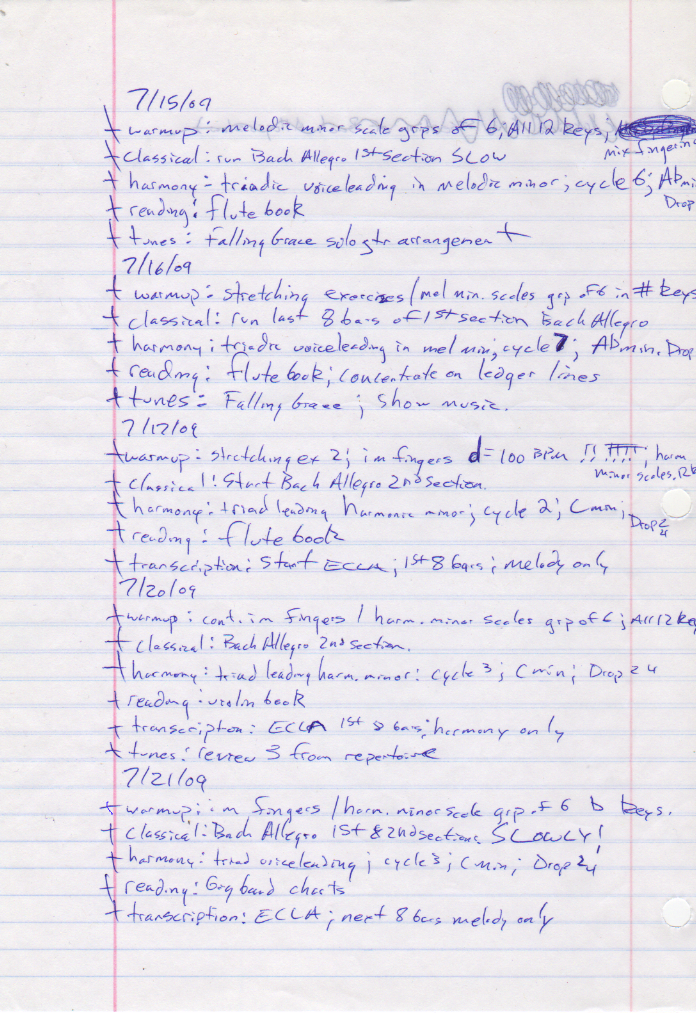When beginning to learn an instrument, you need to know how to effectively practice to produce results. This plays such a pivotal role for beginners and more advanced students for many reasons, including your ability to:
- Decide to keep playing the instrument
- Find what process is most effective for learning a concept
- Broaden musicality, vocabulary and styles
- Expand critical thinking skills
- Develop organizational and time management skills
- Define strengths and weaknesses
- Picture long-term goals
- Determine if you have accomplished goals or have failed to meet goals
- Declare when to move on to something else
In my work as a freelance educator in New York City, I teach a lot of guitar lessons that range from children to adult students. With each student, the material I cover is very diverse for a good reason: no student is the same. However, the material I present comes in second to developing a good practice routine. Without a routine, you can’t master the material. So, what are some good steps to take in order to make a practice session effective while maintaining momentum?
First, you need to assess how much time you have each day. This will let you know not only how much material you can cover, but also how to break it up over the coming weeks. Use a stopwatch if you feel it’s necessary to help keep you on track. Consistency is key. It’ll be harder to practice on some days more than others. My advice is to concentrate more on the long-term. A small step is equivalent to a large step in the grand scheme of it all. Also, you’ll need to build upon and review what you practiced yesterday or you will run the risk of losing it. Repetitiveness is key to developing technique on your chosen instrument.
Second, write down the material you need to practice as well as the goals you want to achieve. For the past five years, I’ve primarily used spiral notebooks along with a master sheet of categories and goals in my routine. Using my master sheet as a guide, I’ll write the date as well as a task list for what I need to cover for that day. My day won’t be complete unless I can check off each task. In the early days of doing this, it helped me realize how I need to make tasks more reasonable to achieve them.
For instance, some days it would be mentally impossible for me to check off every item in the list. I learned that for big projects, I needed to think more long-term. Instead of learning a full chorus of Al Dimeola’s solo, I focused on the first four measures the next day. Then, I worked on the next four measures the following day. I used the same thinking for my other categories as well. I found that I progressed much faster than before not only because I covered each category almost every day, but also because I approached it in a way that didn’t leave me overwhelmed. Here is an example of this technique in action:
Note: writing observations helps a great deal, too.
Hopefully this post will help out in terms of solidifying a steady routine.

